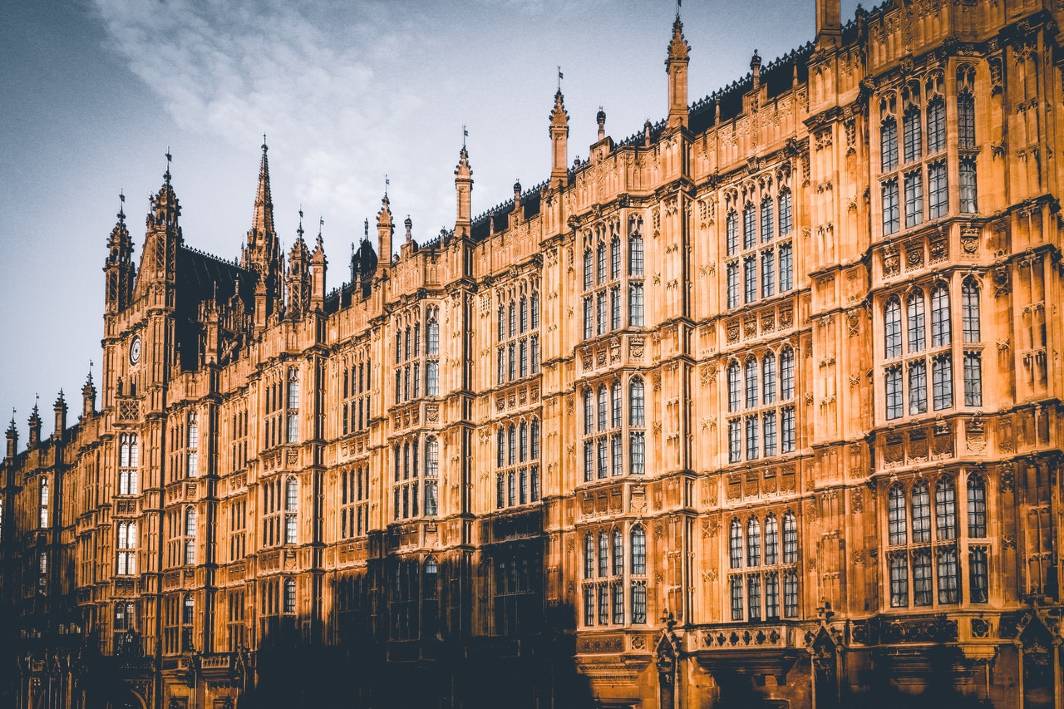Six months on: are Johnson’s Conservatives keeping their green election promises?
“If there is a majority of Conservative MPs on December 13th, I guarantee I will get our new deal through Parliament.” Looking at Boris Johnson’s Brexit-focused foreword to the December 2019 Conservative manifesto, it’s hard to believe that the general election was just six months ago.
One of the key promises in that manifesto was a reiteration of the government’s commitment to reach net zero greenhouse gas emissions by 2050. Earlier in 2019, the UK had become the first major economy in the world to set itself a legally binding target for emissions reduction. The December election manifesto was a chance to set out more detail on how we would reach that target. Six months on, given all the unforeseen changes that have faced us since then, what progress has been made?
Buildings
December’s winning manifesto promised: “We will help lower energy bills by investing £9.2 billion in the energy efficiency of homes, schools and hospitals.” The Budget in March introduced the £270 million Low Carbon Heat Support Scheme to fund lower-carbon heating such as heat pumps and biomass boilers, but there was no mention of energy efficiency improvements to buildings. So far, the £9.2 billion specifically promised for energy efficiency improvements is nowhere to be seen. The six million households identified by the Committee on Climate Change as eligible for cost-effective cavity-wall insulation may face another draughty winter.
Active travel
The Conservatives’ manifesto made no mention of walking and didn’t offer much for cycling. The promise was to create a new £350 million Cycling Infrastructure Fund, but this actually represented a cut to ring-fenced cycle funding (from £7 per head in England outside London to £1.55 per head).
In February, the Prime Minister announced £5 billion for buses and cycling combined, which sounds more generous, but when questioned in Parliament he admitted that cycling’s share of the pot wouldn’t exceed the £350 million already promised. The March Budget announced some of the projects that the Cycling Infrastructure Fund would be spent on, including four freeways in Dorset and a new route between Nottingham and Derby.
So, although the manifesto promises for active travel were unambitious, the government kept its word and delivered the promised funding in the first Budget after the election. Then COVID-19 came along to give active travel in the UK a huge boost.
In May, Grant Shapps announced a “once in a lifetime” £2 billion fund to boost cycling and walking. This isn’t new money – it’s all coming out of the same £5 billion pot announced in February – but it looks as if active travel is now getting 40% of the “buses and bikes” fund, when it was getting less than 20% before. Even better, £250 million of the money comes as a new “emergency fund”, intended to be spent within weeks on quick measures such as widening pavements and creating pop-up cycle lanes.
Electric vehicles
The manifesto promised that if elected, the government would work on phasing out petrol and diesel cars as soon as realistically possible. In February, they made some progress on this by announcing that they would be banning the sale of new petrol and diesel cars from 2035. However, the Committee on Climate Change had already recommended that to reach our net zero target, the ban should come in by 2030. (We explained the other serious flaws with the petrol and diesel phase-out in March.)
The manifesto also promised an investment of £1 billion in a fast-charging network for electric vehicles, “to ensure that everyone is within 30 miles of a rapid electric vehicle charging station”. The March Budget created the Rapid Charging Fund as part of a £500 million commitment for charging infrastructure. A few weeks ago the Government published its plan for developing the rapid chargepoint network in England, after researching which areas will need it the most. The focus was on England because in Scotland, Wales and Northern Ireland, planning is a devolved matter. (In Northern Ireland, anything to do with supplying electricity is also devolved.) It remains to be seen what will happen about EV charging in the other three countries of the UK, but in England, we have seen plenty of progress on expanding capacity in the past six months.
Public transport funding
The Committee on Climate Change said in a May 2019 report that to reach our net zero target, household emissions from transport would need to be close to zero in 2050, and recommended electric buses and trains as part of the solution. The Conservatives’ manifesto promised a “transport revolution” with new rail links. (It mentions “more electrification”, but doesn’t give any detail.)
The first rail infrastructure to be promised in the manifesto is Northern Powerhouse Rail, which will start with a high-speed link between Leeds and Manchester and then move on to connecting other areas, including Liverpool, Newcastle and Sheffield. When the government approved HS2 in February, they announced that Northern Powerhouse Rail, HS2 and the planned trans-Pennine upgrades would be integrated into one umbrella project called High Speed North. Progress on an integrated plan is still at the stage of exploring options and preparing a proposal. In the meantime Network Rail is getting on with improving and electrifying some routes in the trans-Pennine area, but it is hard to see that any serious progress has yet been made on the flagship Leeds-Manchester link since the election.
The next significant rail infrastructure promised in the manifesto is the Midlands Rail Hub, and this had £20 million earmarked for it in the March 2020 Budget. This looks like significant progress, but the context of this announcement was that the same section (Strategic Transport Projects) of the same Budget allocates £27 billion for new roads in England alone.
But progress has been made on meeting another manifesto promise: to “give city regions the funding to upgrade their bus, tram and train services to make them as good as London’s”. In February, the government announced the allocation of £170 million to improve bus services, including £50 million for the creation of the UK’s first “all-electric bus town”.
In March, the Budget allocated £1 billion to be spent on public transport and active travel in areas all over England. This £1 billion, from the Transforming Cities Fund, is separate from the £170 million ring-fenced for buses, but comes out of the £5 billion already announced for buses and bikes in February. A lot of change can be effected with this kind of money, but this must be seen in the context of roads getting 27 times that amount.
Offshore wind power
The UK was already a world leader in offshore wind power before the election, and the Conservatives’ 2019 manifesto promised to build on this by increasing offshore wind capacity to 40GW by 2030. The government’s Offshore Wind Sector Deal, published in March 2019, had set out an aim of building “up to” 30GW of offshore wind capacity by 2030, so the new 40GW promise was an ambitious increase in the target.
We now have a capacity of 9.8GW, according to government figures, up from about 8.5GW at the time of the election, and the sector deal is described officially as “on track”. A new £100 million fund, the Offshore Wind Growth Partnership (OWGP) has been established to boost productivity, and seven UK companies secured funding from it in January. In February, representatives from the offshore wind sector met with government to discuss how to further handle the barriers to developing more coordinated infrastructure.
Meanwhile, pressure to deliver is coming both from environmental groups and from industry. Last week, the co-chair of the Offshore Wind Industry Council told Parliament’s Environmental Audit Committee that offshore wind would be central to the UK’s economic recovery after the coronavirus slump. Meanwhile, Greenpeace published its vision of a green recovery in which it said offshore wind should be “the backbone of the UK’s energy system”. Luckily, offshore wind capacity seems to be one area in which the government is likely not to just to keep its manifesto promise, but actually deliver more than promised.
Other renewables
Without giving any specific numbers, the government’s manifesto committed to “increasing our commitment to renewables”. The Chancellor noted in his March Budget speech that thanks to falling costs, renewables are likely to be the UK’s main source of electricity in the future. But the Budget didn’t announce any new investment in renewables.
However, the coronavirus has accelerated our move to a cleaner energy mix. When the lockdown caused a drastic fall in energy demand, the National Grid reduced supply by shutting down the UK’s four coal-fired power stations. They will reopen, but the government’s aim of phasing out coal completely looks set to be achieved much sooner than expected. This week the UK reached the milestone of two whole months in which no coal was burnt for electricity. So, although the government hasn’t taken any big steps to boost renewables in the past six months, serious progress has been made anyway. So far this year, renewables have generated more power than all fossil fuels put together.
Natural gas is the main fossil fuel still in use, and the manifesto promised to support the transition away from this and oil while reducing the impact on jobs. One way in which the government has moved towards greener energy while still supporting the North Sea oil and gas industry is the new Carbon Capture and Storage (CCS) Fund. However, work hasn’t yet started on any new CCS facilities. The Acorn Project in Scotland aims to have a CCS system up and running by 2023, but this was already in progress before the election (thanks to EU funding), so doesn’t count as a new CCS project.
Looking ahead
On the night of 12th December 2019, nobody could have predicted what the next half-year would bring. The coronavirus has hit the UK economy hard and forced the government to grapple with unprecedented challenges to the health service and our way of life. Of course the virus has derailed progress on countless projects – but in some areas, especially those connected with our net zero target, it has actually moved us forward. The challenge of the next six months will be to emerge from the lockdown and rebuild our economy without throwing away the gains we have made.












